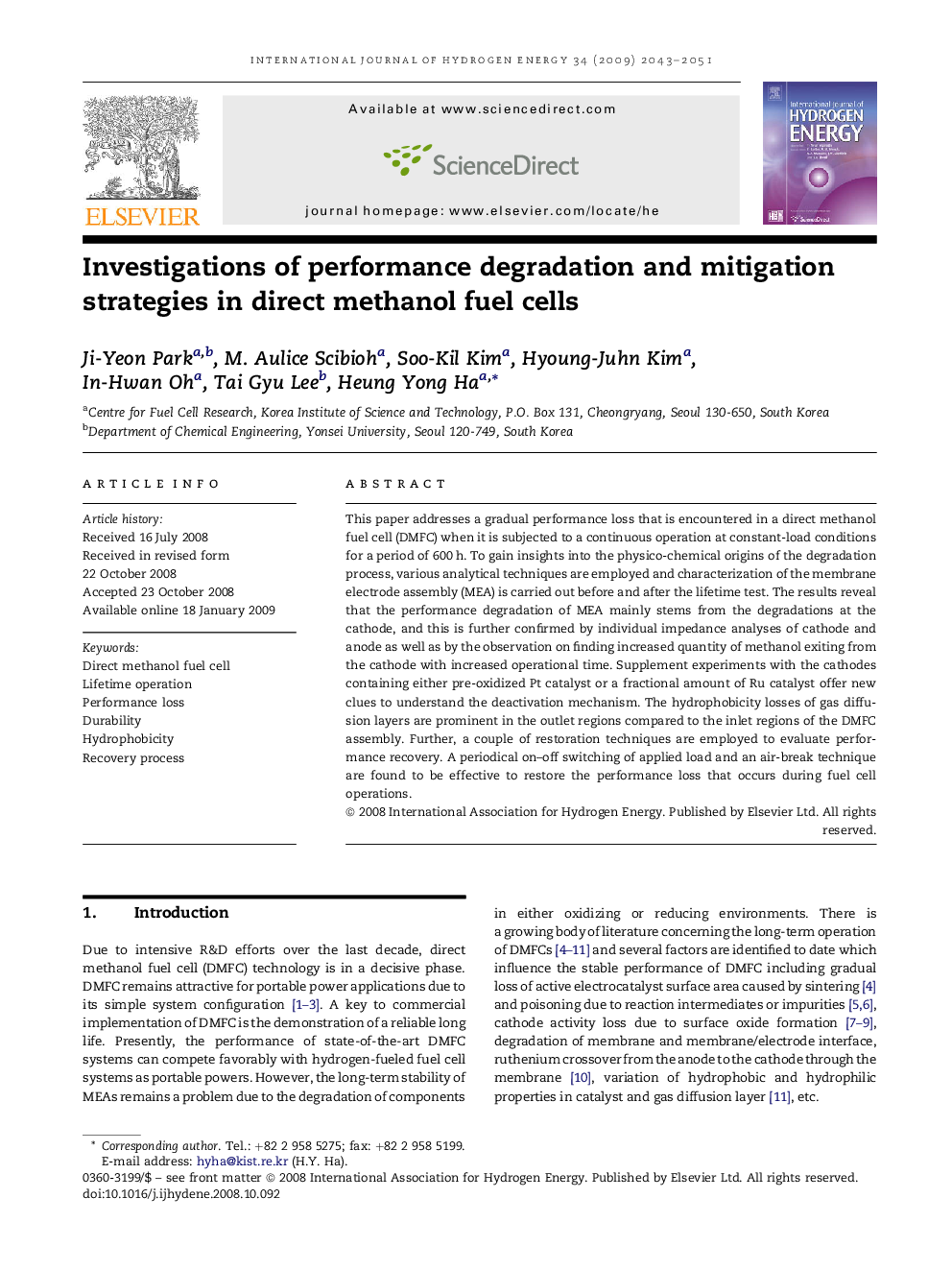| Article ID | Journal | Published Year | Pages | File Type |
|---|---|---|---|---|
| 1274330 | International Journal of Hydrogen Energy | 2009 | 9 Pages |
This paper addresses a gradual performance loss that is encountered in a direct methanol fuel cell (DMFC) when it is subjected to a continuous operation at constant-load conditions for a period of 600 h. To gain insights into the physico-chemical origins of the degradation process, various analytical techniques are employed and characterization of the membrane electrode assembly (MEA) is carried out before and after the lifetime test. The results reveal that the performance degradation of MEA mainly stems from the degradations at the cathode, and this is further confirmed by individual impedance analyses of cathode and anode as well as by the observation on finding increased quantity of methanol exiting from the cathode with increased operational time. Supplement experiments with the cathodes containing either pre-oxidized Pt catalyst or a fractional amount of Ru catalyst offer new clues to understand the deactivation mechanism. The hydrophobicity losses of gas diffusion layers are prominent in the outlet regions compared to the inlet regions of the DMFC assembly. Further, a couple of restoration techniques are employed to evaluate performance recovery. A periodical on–off switching of applied load and an air-break technique are found to be effective to restore the performance loss that occurs during fuel cell operations.
